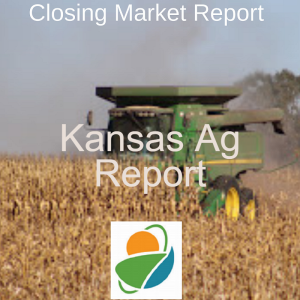
For the fifth straight month, the Creighton University rural Mainstreet index climbed above growth neutral. According to the monthly survey of bank CEOs in a rural area of a 10 state region that is dependent on agriculture and or energy. The overall index for April slipped to a still healthy 69 from a record high 71.9 in March. The index ranges between zero and 100 with a rating of 50 representing growth neutral, approximately 37.9% of bank CEOs reported that their local economy expanded between March and April. Dr. Ernie Goss of Creighton University says a strong growth in grain prices and the Federal Reserve's record low interest rates, along with growing exports have underpinned the rural Mainstreet economy even though he said the current rural economic activity does remain below pre pandemic levels are fully 100% of bank CEOs that were surveyed indicate that export markets very important or somewhat important to the local economy.
For the seventh straight month the farmland Price Index advanced above growth neutral, the April reading climbed to 78.6. That's the highest level since 2012. And this is the first time since 2013. At the Creighton survey has recorded seven straight months of farmland prices above growth neutral. Bankers also reported that approximately 99.1% of farmland sales over the last six months have gone to non farmer investors.
Well, Ag Secretary Tom Vilsack says that USDA is now only days away from announcing greater opportunities for landowners to take fragile farmland out of production and exchange for a payment. His article recently said the Biden ministration is looking for ways to halt a 13 year decline in the number of signups under the Conservation Reserve Program. That is the largest land set aside program in the country. Bill sec said that the CRP could play a role in President Biden's plan to make American agriculture the first in the world to get to net zero greenhouse gas emissions. Now approximately 20 point 8 million acres are enrolled in the Conservation Reserve Program with contracts on 3 million acres set to expire at the end of September. While the 2018 Farm Bill calls for gradually raising the enrollment cap to 27 million acres. It lowered the annual rental rate to land owners to pay for those extra acres. Now some senators had said last fall that USDA was being a bit stingy with those incentives and bonuses that it had previously offered to encourage producers to participate.
More Episodes
 2023-01-13
2023-01-13
 2023-01-04
2023-01-04
 2023-01-03
2023-01-03
 2022-12-30
2022-12-30
 2022-12-29
2022-12-29
 2022-12-23
2022-12-23
 2022-12-22
2022-12-22
 2022-12-20
2022-12-20
 2022-12-19
2022-12-19
 2022-12-16
2022-12-16
 2022-12-12
2022-12-12
 2022-12-09
2022-12-09
 2022-12-07
2022-12-07
 2022-12-06
2022-12-06
 2022-12-05
2022-12-05
 2022-12-02
2022-12-02
 2022-11-29
2022-11-29
Create your
podcast in
minutes
- Full-featured podcast site
- Unlimited storage and bandwidth
- Comprehensive podcast stats
- Distribute to Apple Podcasts, Spotify, and more
- Make money with your podcast
It is Free
- Privacy Policy
- Cookie Policy
- Terms of Use
- Consent Preferences
- Copyright © 2015-2024 Podbean.com





